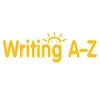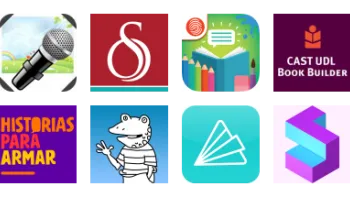Take a look inside 5 images
Writing A-Z
Pros: The step-by-step writing guides offer students structure but still leave room for creative expression.
Cons: There's nothing set up to support group work and collaboration among students. Activities don't offer anything particularly new.
Bottom Line: This full-service program can help teachers easily weave writing into their curriculum.
Teachers can use Writing A-Z as a one-stop shop for help incorporating writing into any school subject -- with offerings from printables and projectables to interactive, structured writing assignments. It merges literacy skill building with content, so students practice writing mechanics like words, grammar, spelling, and sentence structure as they write about a science experiment, history lesson, or anything else. Students can also try their hand at different narrative types like persuasive writing, autobiographical stories, informational text, or creative writing. There are lots of ideas for lessons off the screen, but teachers should also take advantage of the guided online writing assignments. Each student will need unique sign-in credentials -- which teachers create in their dashboard -- as well as access to a computer. Walk students through a new assignment, including the checklist they'll see before turning it in, to make sure they understand what you'll be looking for when you assess their work.
Writing A-Z is a literacy support and instruction website with teacher resources, printable worksheets, and online student activities to guide elementary schoolers along the path to becoming successful writers. There are two main types of content: resources for teachers to use in off-screen (or projected) lessons and a student portal where students can work on writing projects. The teacher side provides detailed and thorough resources, from the basics of letter learning to grammar, spelling, and beyond. There are printable worksheets and booklets, printable or projectable instructional aides, full lesson plans, and lots of writing prompts. The interactive side offers students scaffolded support for developing an idea and fleshing it out to create a polished piece of writing. With the Build-A-Book and Write-Your-Way tools, students can add drawings and artwork. Before turning their work in, students go through a checklist that asks them to double-check spelling, grammar, sentence structure, and more. Teachers can then review their students' writing and provide feedback directly in the tool. There's a suggested grading rubric to help teachers with assessment.
Writing A-Z covers a lot of ground and offers a thorough approach to nurturing successful writers. There's a wealth of resources here that can easily help teachers guide their students from the most basic elements of structure and mechanics to complex writing assignments. Many of the resources rely on traditional worksheet approaches to teaching and reinforcing skills; however, while they don't push pedagogical boundaries, they offer useful resources that have great breadth and detail. They're also well organized, so teachers can easily access resources that build on skills in a logical progression. And some activities, although embedded in worksheets, do get creative -- like a song to help students remember to capitalize the first word in a sentence. Lots of different kinds of prompts inspire students to write about something interesting and express themselves with words.
Perhaps Writing A-Z's bigger strength is its interactive side. Teachers can easily create writing assignments for all skill levels and a variety of narrative types. All assignment types give kids valuable step-by-step guidance, as well as the option to skip the guidance and get right to writing. There are also fun options for illustrating and creating a complete book. The level of detail continues with thorough checklists for students to use when looking over their work before they turn it in, and simple teacher tools for assessing work. Writing A-Z gives teachers valuable assistance in creating a robust writing program.














